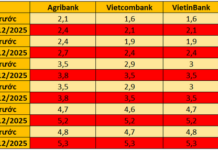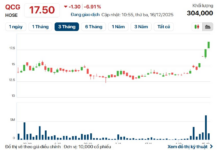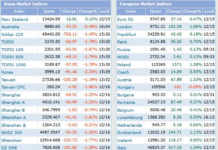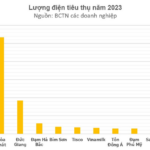Vietnam Electricity (EVN) has issued Decision No. 1046/QD-EVN dated October 11, 2024, on adjusting the average retail electricity price, accordingly, the average retail electricity price is VND 2,103.1159/kWh (excluding value-added tax) from October 11, 2024. Equivalent to an increase of 4.8% compared to the current average electricity price.
For large electricity-consuming enterprises, a 4.8% increase in electricity prices will certainly increase costs.
According to our data, Hoa Phat Group (HPG) consumed up to 2.67 billion kWh of electricity in 2023. However, Hoa Phat has self-supplied about 90% of its electricity for production, reaching 2.4 billion kWh.
With an increase of about VND 100, Hoa Phat only spent an additional VND 26-30 billion on electricity at these complexes.
In 2025, with the operation of the Dung Quat 2 project, Hoa Phat’s electricity consumption will increase sharply, but this enterprise still has a cost advantage thanks to the recycling technology that helps to self-supply 90% of its electricity as mentioned.
Another enterprise with very large electricity consumption is Duc Giang Chemical Group (DGC) with electricity consumption in 2023 of 922 million kWh.
With the increase in electricity prices, Duc Giang incurred additional electricity costs of nearly VND 90 billion. This number is insignificant compared to the net revenue in 2023 of VND 9,748 billion or cost of goods sold of VND 6,308 billion.
Other enterprises with the highest electricity consumption such as Ton Dong A, Phuc Dat Fertilizer (DPM), Habeco Fertilizer (DHB), Century Fiber (STK), Vinamilk (VNM), Sabeco (SAB)… range from 100 to 300 million kWh/year. The increase in electricity costs for these enterprises ranges from VND 10 billion to VND 30 billion.

Thus, the impact of the electricity price increase is insignificant thanks to the small increase in electricity costs and many enterprises saving a significant portion of their electricity costs thanks to investing in solar power.
Previously, in 2023, retail electricity prices were adjusted twice (3% in May 2023 and 4.5% in November 2023)
According to Mirae Asset’s assessment, after each electricity price increase, the increase in retail electricity prices will negatively affect some electricity-intensive manufacturing industries, with a sharp increase in cost of goods sold, typically cement, chemicals, steel, and paper.
Specifically, according to Mirae Asset’s estimates, electricity costs account for about 9-10% of the cost of goods sold for steel manufacturing enterprises, this rate is also equivalent to enterprises in the chemical industry.
In particular, the cement industry accounts for about 14-15% of the cost of goods sold, except for large enterprises with cement rotary kilns, where electricity costs account for about 9-10% of the cost of goods sold.
For paper manufacturing enterprises, it is estimated that electricity costs account for a lower proportion than some other industries, accounting for an average of 4-5% of sales expenses and management expenses.

Mirae Asset believes that if electricity costs increase, enterprises cannot pass this on to consumers. It is estimated that a 4.5% increase in electricity costs will lead to an increase in the cost of goods sold, which could reduce the total pre-tax profit of each industry by up to: pre-tax profit of the steel industry decreases by 23%, pre-tax profit of the paper industry by 2%, pre-tax profit of the cement industry by 21%, and pre-tax profit of the chemical industry by 1%.
However, if enterprises can pass on the increased electricity costs by increasing selling prices to consumers, the impact of higher input costs can be mitigated.
In 2023, EVN’s actual commercial electricity output was 253.05 billion kWh, and commercial electricity revenue was VND 494,359 billion.
Thus, with the same commercial electricity output as in 2023, with a 4.8% increase in retail electricity prices, EVN’s revenue is expected to increase by about VND 23,700 billion.
Does Turning Your Air Conditioner On and Off Immediately Use More Electricity? Debunking a Common Misconception
The use of air conditioners has become a staple in many households, yet not all users are aware of the simple tips and tricks to utilize this appliance efficiently and economically.
The Power of Electricity: Meeting the Ever-Growing Demand
In May 2024, the average daily electricity consumption across the system is forecasted to reach 913.6 million kWh/day, a significant surge of 12.24% compared to the same period last year. The maximum capacity is expected to peak at a staggering 49,000 MW, with the Northern region alone potentially reaching 24,500 MW.










































